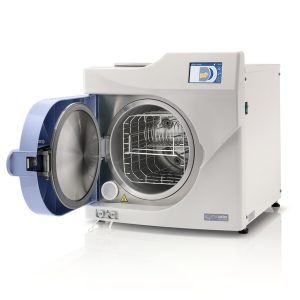Categories
Most Recent
Keeping control of infection prevention
15th Nov 2023 in Dental, HealthcareThe Covid-19 pandemic made everyone hyper vigilant about the importance of infection control. Using hand sanitisers, elbow bumping instead of shaking hands, dodging joggers on the pavement and generally ‘keeping our distance’ became second nature. And while such daily practices are now mainly in the rear-view mirror, the importance of infection control and patients’ awareness of it – and that of their dental practitioners – has increased significantly.
Given that dentistry is one of the most exposed professions to respiratory diseases,[i] the feeling that ‘you’re in safe hands’ is paramount. Therefore, it’s essential that dental practitioners shout about just how safe their practices are to allay any lingering patient worries.[ii]
Pathway to infection
As you will know, infections can be transmitted in the dental surgery via several routes:
- direct contact with blood, oral fluids, or other infected materials
- indirect contact with contaminated objects, such as instruments
- contact of conjunctival, nasal, or oral mucosa with droplets, containing microorganisms from an infected person and propelled by coughing, sneezing, or talking
- inhalation of airborne microorganisms that can remain suspended in the air.i
Chain of infection
It’s necessary to understand the chain of infection in order to reduce the risk to patients during dental procedures. There are six steps involved: Organism > Reservoir > Portal of exit > Transmission> Portal of entry > Vulnerable hosts.[iii]
‘Organism’ is defined as an infectious agent of which there are four types: bacteria, virus, fungi or parasite (e.g. head lice). The ‘reservoir’ is where the organism can survive – so surfaces and the patient’s skin (or staff member’s). Hand-touch sites are key here – such as door handles and equipment. And with hands being the most likely source of cross infection,[iv] the hand washing mantra is one of the most important infection control measures that can be implemented.
The ‘portal of exit’ refers to how the infectious agent leaves the reservoir, for example in blood and saliva. Personal Protective Equipment can offer protection here such as the use of disposable gloves, aprons and face masks.
‘Transmission’ refers to how the microbes enter the body (e.g. via inhalation or ingestion). However, the most common mode is through direct contact between the skin and a contaminated source.
‘Portal of entry’ describes how the agent invades a susceptible host, for example through broken skin and mucous membranes, and ‘vulnerable host’ refers to a patient who is unable to resist the pathogen, for example during the pandemic someone who was not vaccinated.
Infection control measures
So what measures can a dental professional take to ensure their practice is totally in control of its infection control? As you are well aware, all dental practices must have an infection control policy in place.[v] Infection control needs to include all aspects of the running of your practice: covering everything from personal hygiene to the cleaning and sterilisation of instruments and the maintenance of the equipment. Effective prevention and control of infection must be part of everyday practice and be applied consistently.vii
Training in infection control is a core part of CPD. The GDC recommends that all dental professionals should complete at least five hours of disinfection and decontamination training in each five-year CPD cycle.[vi]Keeping your knowledge up to date is vital. Also, remember to maintain records of this training for practice compliance.
For all the devastation caused by the pandemic, certain procedures are now very much par for the course in dental practice. Hand hygiene remains of the utmost importance.
There are key handwashing stages in the decontamination process to minimise the risk of contamination:
- before and after each treatment session
- before and after the removal of PPE
- following the washing of dental instruments
- before contact with instruments that have been sterilised
- after cleaning or maintaining decontamination devices used on dental instruments
- at the completion of decontamination work.viii
Using the very latest autoclaves, washer disinfectors, ultrasonic cleaners and air disinfection equipment will also keep dental
practitioners on top of each stage of their infection control process.
their infection control process.
Eschmann has been designing and manufacturing autoclaves for over 60 years, and today supplies the dental industry with the Little Sister, SES, and Miele brands. Its solutions are reliable, easy to use and are available with a dedicated Care & Cover service which delivers unlimited breakdown cover, Annual Validation and Pressure Vessel Certification, unlimited Eschmann parts and labour, as well as Enhanced CPD user training.
Dental practices have come out of the pandemic with a greater appreciation of, and commitment to, infection control. Patients who feel that they are in a safe pair of hands will be more at ease and thereby more open to a positive dental experience. It’s a win-win.
[i] Upendran A, Gupta R, Geiger Z. Dental Infection Control. 2022 Aug 8. In: StatPearls [Internet]. Treasure Island (FL): StatPearls Publishing; 2023 Jan–. PMID: 29261939.
[ii] Standards for the Dental Team. General Dental Council. https://standards.gdc-uk.org/pages/principle1/principle1.aspx [Accessed July 2023]
[iii] Cole M. Breaking the chain of infection. 1 January 2014. Dental Nursing https://www.dental-nursing.co.uk/features/breaking-the-chain-of-infection [Accessed July 2023]
[iv] Standard infection control precautions. NHS England. www.england.nhs.uk/national-infection-prevention-and-control-manual-nipcm-for-england/chapter-1-standard-infection-control-precautions-sicps [Accessed July 2023]
[v] Cockcroft B, Chief Dental Officer. Decontamination – Health Technical Memorandum 01-05: Decontamination in primary care dental practices. 31 March 2013 www.england.nhs.uk/wp-content/uploads/2021/05/HTM_01-05_2013.pdf [Accessed July 2023]
[vi] Continuing Professional Development for dental professionals, p14. https://www.gdc-uk.org/docs/default-source/enhanced-cpd-scheme-2018/continuing-professional-development-for-dental-professionals-2008.pdf?sfvrsn=d8e9ebd3_2 [Accessed August 2023]









